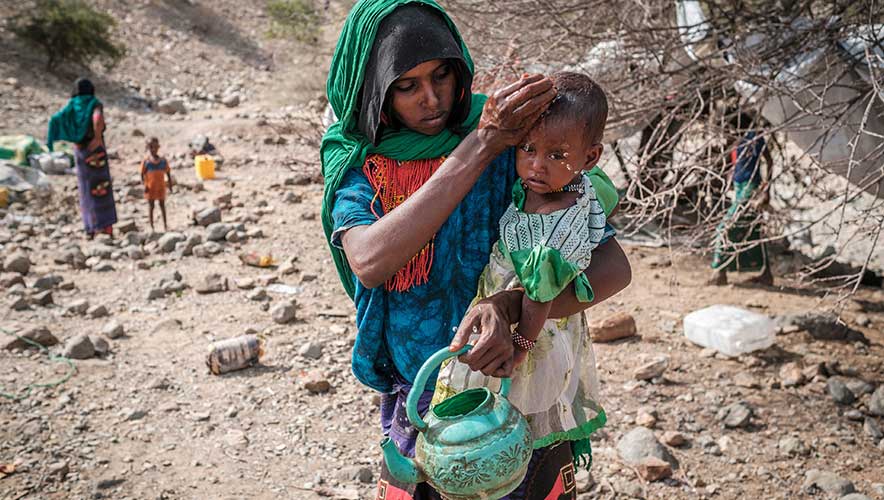Ongoing Crisis in Ethiopia Impacts 6 Million People
Ethiopia is facing a unique crisis, with a confluence of drought, flooding, and war throughout regions in the nation.
UNICEF reported on 23 August that in Ethiopia, Kenya, and Somalia the number of drought-impacted people increased from 9.5 million in February 2022 to 16.2 million people in July 2022.
“History shows that when high levels of severe acute malnutrition in children combine with deadly outbreaks of diseases like cholera or diarrhea, child mortality rises dramatically—and tragically,” said Catherine Russell, UNICEF executive director, in a press release. “Across the Horn of Africa and the Sahel, millions of children are just one disease away from catastrophe.”
During the past four years, some regions in southern and northern Ethiopia have been hit with high temperatures and little rain so that the resulting drought has left residents with harvest failures and vast animal deaths.
But while portions of Ethiopia are at risk of drought and water vulnerability—with the cost of water in June rising by 50 to 200 percent—other regions are seeing too much water.
The United Nations estimated that the flooding expected in the coming weeks could impact more than 1.7 million people.
The climate crisis displacing Ethiopians has only been further exacerbated by an ongoing conflict that began in November 2020. Ethiopia’s prime minister, Abiy Ahmed has been engaged against Tigrayan rebel group, the Tigray People's Liberation Front. The fighting between the two parties has resulted in the government declaring a state of emergency in late October, allowing citizens to arms themselves.
In March 2022, pressures from famine in the region triggered a partial truce with rebels, with the government allowing food aid into Tigray. “The food security situation in Tigray continues to be of concern, with 89 percent of the households food insecure. …Out of the total population, 42 percent are moderately food insecure and 47 percent are severely food insecure,” the World Food Programme said in a security assessment report published in August.
Fighting resumes in Ethiopia, marking the end of a ceasefire observed since March and could worsen the humanitarian crisis in the northern Tigray region https://t.co/fGisA7Ug2h pic.twitter.com/WAXQmE65zv
— Al Jazeera English (@AJEnglish) August 24, 2022
However, reports from locals and government authorities confirmed that the five-month cease-fire was broken early on 24 August. Fighting occurred between rebel and government forces along the border of the Tigray region, according to The New York Times. “Each side accused the other of firing first,” the Times said.
“The war has been marked by accusations of atrocities on both sides,” The Washington Post reported, citing a 2021 United Nations report that found that both sides were responsible for violating international human rights, as well as humanitarian and refugee law—perhaps going as far as committing war crimes and crimes against humanity.
The drought and military conflict in the region have impacted an estimated 6 million people who are “sealed off from the outside world with no telecommunications, no banking services, and very limited electricity, and fuel,” said Dr. Tedros Adhanom Ghebreyesus, director-general for the World Health Organization, during a press conference, noting that the conflict displaced and further endangered millions of people. “As a result, the people of Tigray are facing multiple outbreaks of malaria, anthrax, cholera, diarrhea, and more. …This is the worst disaster on Earth.”
